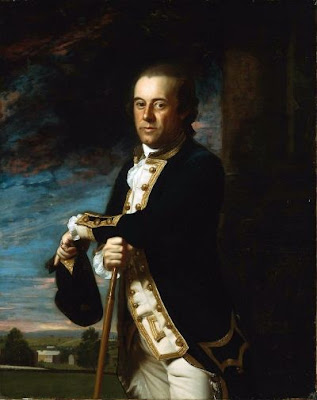
I hate to put up family travel pictures. I mean, who's interested in that apart from me and a couple dozen friends and relatives? Even so, I thought I'd make an exception here and tell you about a trip I made to visit my grown-up son in the future. That's right....the future!
It all started when I received a kind of funky greetings card (above) postmarked March, 2039. It was from my kid, then fully grown up and living in the same city thirty years from now. He said he'd be happy to treat me to dinner. Wow! Imagine that! A dinner with my kid thirty years in the future! Of course I accepted!

Getting there was easy. The card said I had only to stare at something white for a few minutes and a time warp would take care of the rest. I did, and it worked!

Following the instructions on the card, I took a paper helium plane (above) to my kid's house, which was in a small town North of LA.

We landed at Vagina International Airport (above).

His house was nearby so I decided to walk there. The scenery was beautiful.

I had no trouble finding the house but it took me forever to figure out where the door was.

I found my kid reading in the living room, behind his buttocks sculptures. Amazingly, he looked only slightly older than the last time I saw him, back in 2009.

It was great to see him! We talked and talked and talked, and finally sat down to a light lunch. That was my chair above!

To my surprise the bowls were just for decoration. The meal was the flower...I guess everybody in the future's a vegetarian! I said I wasn't hungry.

After lunch we left for the city. Above is a picture of my kid's butler, who helped us into the car. The poor guy was the victim of flawed genetic engineering.

In the city we decided to take in a movie (above) that everyone was talking about. It was the story of a poor circle that longed to be a square, but kept falling into something that looked like egg yolk. I didn't understand it but my son and the rest of the audience were moved to tears and bought souvenirs in the lobby.

After the show we went to a swank vegetarian restaurant (above).

My son said the restaurant (above) was rather small by the standards of his time, but he thought an intimate setting was best. I kept hitting the people behind me with my elbow.

Finally dinner was served, and the proud waiters and cooks all gathered around to see what somebody from the past would think of their cooking. That's it above. I couldn't figure out how it worked, so I had to make an excuse about not feeling well enough to eat.

My kid called a cab...that's it above. Boy, the future does wonders with plastic!

Back home I ran for the nearest hamburger stand. The future's great but don't expect to be able to eat the food!




.jpg)




























































